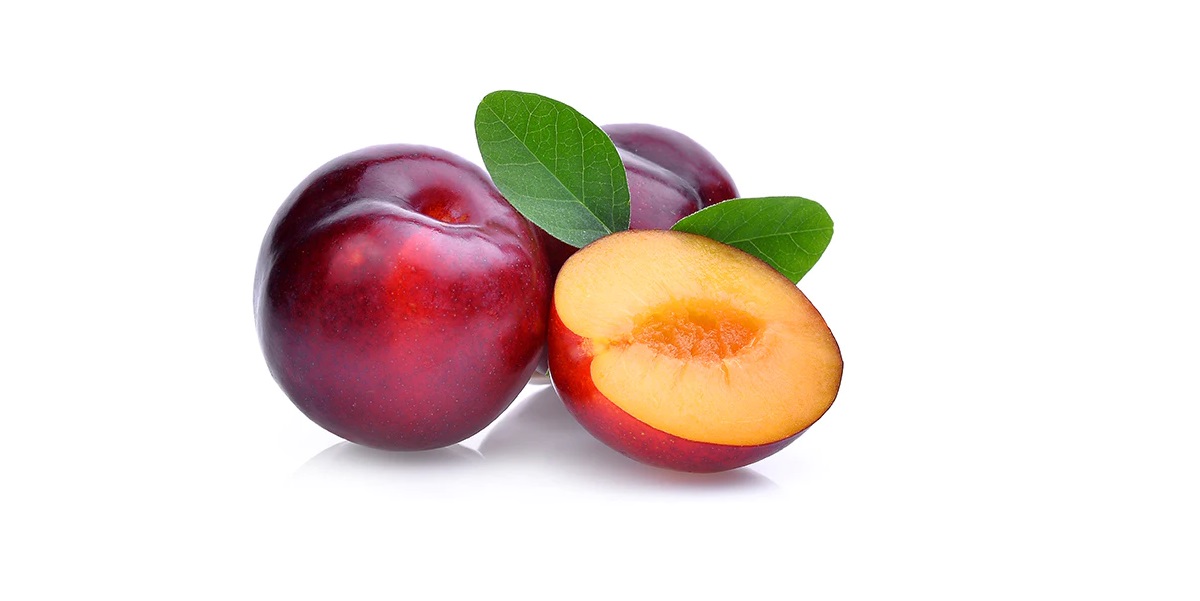
Plums are not only a delicious fruit but also a nutritional powerhouse packed with vitamins, minerals, and antioxidants. These juicy and sweet fruits come in a variety of colors and sizes, making them a popular choice for snacking, baking, or incorporating into salads and desserts. But there’s more to plums than just their tasty flavor and vibrant appearance.
In this article, we will explore 20 fascinating facts about plums that you may not have known before. From their ancient origins to their health benefits and culinary uses, we will delve into the world of plums and uncover some interesting tidbits about these versatile fruits. So, grab a plum, sit back, and get ready to learn something new!
Key Takeaways:
- Plums are not only delicious but also packed with antioxidants and fiber, making them a healthy and guilt-free snack option for anyone watching their calorie intake.
- With over 2,000 varieties and a rich history, plums offer a range of colors, flavors, and culinary possibilities, making them a versatile and fascinating fruit to explore.
Plums belong to the Rosaceae family.
Plums are members of the Rosaceae family, which also includes fruits like cherries, peaches, and apricots. They are closely related to peaches but have a distinct flavor and texture.
There are over 2,000 different varieties of plums.
With such a wide variety to choose from, there is a plum for every taste preference. From the popular Black Amber to the exotic Japanese Satsuma plum, the options are endless.
Plums come in a range of colors.
Plums can be red, purple, blue, green, or yellow, depending on the variety. The skin color does not necessarily indicate the ripeness or sweetness of the fruit.
Plums are packed with antioxidants.
These delicious fruits are a great source of antioxidants, such as vitamin C and anthocyanins, which help protect the body against free radicals and reduce the risk of chronic diseases.
Plums are rich in dietary fiber.
Adding plums to your diet can help improve digestion and prevent constipation. They are an excellent source of dietary fiber, which promotes regular bowel movements and keeps your gut healthy.
Plums are low in calories.
If you’re watching your calorie intake, you’ll be glad to know that plums are a guilt-free snack. With approximately 46 calories per 100 grams, they make for a tasty and nutritious addition to any diet.
Plum trees can live for over 30 years.
When properly cared for, plum trees can thrive for several decades, providing a bountiful harvest year after year. They require well-drained soil, ample sunlight, and regular pruning for optimal growth.
Prunus domestica is the scientific name for plums.
The scientific name for plums is Prunus domestica. This name refers to the domesticated variety of plums that are commonly cultivated for consumption.
Plums have a long cultivation history.
Plums have been cultivated for thousands of years, with evidence of their consumption dating back to ancient civilizations like the Egyptians, Greeks, and Romans.
China is the largest producer of plums.
Plums have a special place in Chinese culture and cuisine. China is the leading producer of plums, followed by the United States, Serbia, and Romania.
Plums can be eaten fresh or dried.
Plums are delicious when eaten fresh, but they can also be dried to make prunes. Prunes are known for their sweet, slightly tangy flavor and are often enjoyed as a healthy snack or used in various culinary preparations.
Plums have a stone-like pit in the center.
At the center of each plum is a hard pit, also known as a stone or seed. The pit needs to be removed before consuming the fruit, as it is not edible.
Plum blossoms are a symbol of beauty in some cultures.
In Japanese and Chinese cultures, plum blossoms are revered for their beauty and significance. They are often associated with resilience, purity, and the arrival of spring.
Plums can be used in both sweet and savory dishes.
Plums’ versatile flavor profile makes them suitable for a wide range of culinary applications. They can be used in pies, jams, chutneys, salads, sauces, and even paired with savory meats like pork or duck.
Plum trees require cold winters to bear fruit.
Plum trees typically need a period of cold dormancy, known as a chilling requirement, in order to produce a successful harvest. This period ensures proper flower development and fruit set.
Plums are a good source of vitamins and minerals.
Plums are packed with essential vitamins and minerals like vitamin A, vitamin K, potassium, and magnesium. These nutrients contribute to overall health and well-being.
Plums have a natural sweetness.
Plums are naturally sweet, making them a delightful addition to desserts, smoothies, and other sweet treats. Their sweetness comes from the natural sugars present in the fruit.
Plums can be stored for an extended period.
If you have a surplus of plums, you can store them to enjoy later. Plums can be refrigerated for up to 2 weeks or frozen for several months without losing their flavor and nutritional value.
Plum trees attract bees for pollination.
Plum trees rely on bees and other pollinators for successful pollination. The blossoms attract bees with their sweet scent and vibrant colors, ensuring the production of plump and juicy fruits.
Plums have a deliciously tart skin.
The skin of plums can have a slightly tart flavor, which adds a unique dimension to their overall taste. Some people prefer to eat plums with the skin on, while others prefer to peel them.
In conclusion, plums are not only a delicious and nutritious fruit but also hold a wealth of history and cultural significance. So go ahead and indulge in the juicy goodness of plums, whether you enjoy them fresh, dried, or incorporated into various culinary delights.
Whether you’re savoring their natural sweetness or appreciating their versatility in cooking, plums are a fruit worth celebrating. Let the 20 plum facts discussed in this article inspire you to explore the vast world of plums and all the delightful ways you can incorporate them into your life.
Conclusion
In conclusion, plums are not just delicious and versatile fruits, but they also offer a wide range of health benefits. From promoting digestion and boosting immunity to supporting heart health and aiding weight management, plums are a nutritious addition to any diet. Whether enjoyed fresh, dried, or in various culinary creations, plums are a delightful way to satisfy your taste buds while nourishing your body. So why not incorporate this vibrant fruit into your daily routine and experience all the amazing benefits it has to offer? Make sure to explore the different varieties of plums available and discover your favorite. Happy plum eating!
FAQs
Q: Are plums high in sugar?
A: While plums do contain natural sugars, they are considered to have a low glycemic index. This means that they have a minimal impact on blood sugar levels compared to other fruits with higher sugar content. It is important to enjoy plums in moderation as part of a balanced diet.Q: How can I store fresh plums?
A: To extend the shelf life of fresh plums, store them in a cool and dry place, such as the refrigerator. Plums can also be stored in a paper bag to help them ripen evenly. Avoid storing them next to ethylene-producing fruits as it can cause them to ripen too quickly.Q: Are plums good for digestion?
A: Yes, plums are a great source of dietary fiber, which aids in digestion and can help prevent constipation. Including plums in your diet can promote a healthy digestive system and support regular bowel movements.Q: Can plums help with weight loss?
A: Plums are low in calories and high in fiber, making them a satisfying snack that can aid in weight management. The fiber content helps you feel full for longer, reducing the likelihood of overeating.Q: Can plums improve heart health?
A: Plums contain potassium, antioxidants, and other compounds that can support heart health. Regular consumption of plums has been associated with a reduced risk of heart disease and lower levels of bad cholesterol.Q: Can I incorporate plums into my recipes?
A: Absolutely! Plums can be enjoyed in various ways, whether it’s adding them to salads, making jams and preserves, baking them in pies and tarts, or even using them in savory dishes like sauces or chutneys. The possibilities are endless when it comes to incorporating plums into your recipes.Q: Are there different types of plums?
A: Yes, there are multiple varieties of plums, including black plums, red plums, green plums, and even yellow plums. Each variety has its own unique flavor profile and can be enjoyed in different ways. Experimenting with various plum varieties can add excitement to your culinary adventures.
Plums are truly remarkable fruits with a rich history and diverse varieties. If you found these plum facts intriguing, consider exploring more about their close relative, the cherry plum, which boasts its own unique characteristics. Delve deeper into the world of plums by learning additional fascinating facts that will make you appreciate this fruit even more. For a sweet and delightful twist, discover how plums can be transformed into mouthwatering desserts like plum pudding strawberry shortcakes, a treat featured in the charming Berry Bitty Adventures.
Was this page helpful?
Our commitment to delivering trustworthy and engaging content is at the heart of what we do. Each fact on our site is contributed by real users like you, bringing a wealth of diverse insights and information. To ensure the highest standards of accuracy and reliability, our dedicated editors meticulously review each submission. This process guarantees that the facts we share are not only fascinating but also credible. Trust in our commitment to quality and authenticity as you explore and learn with us.


